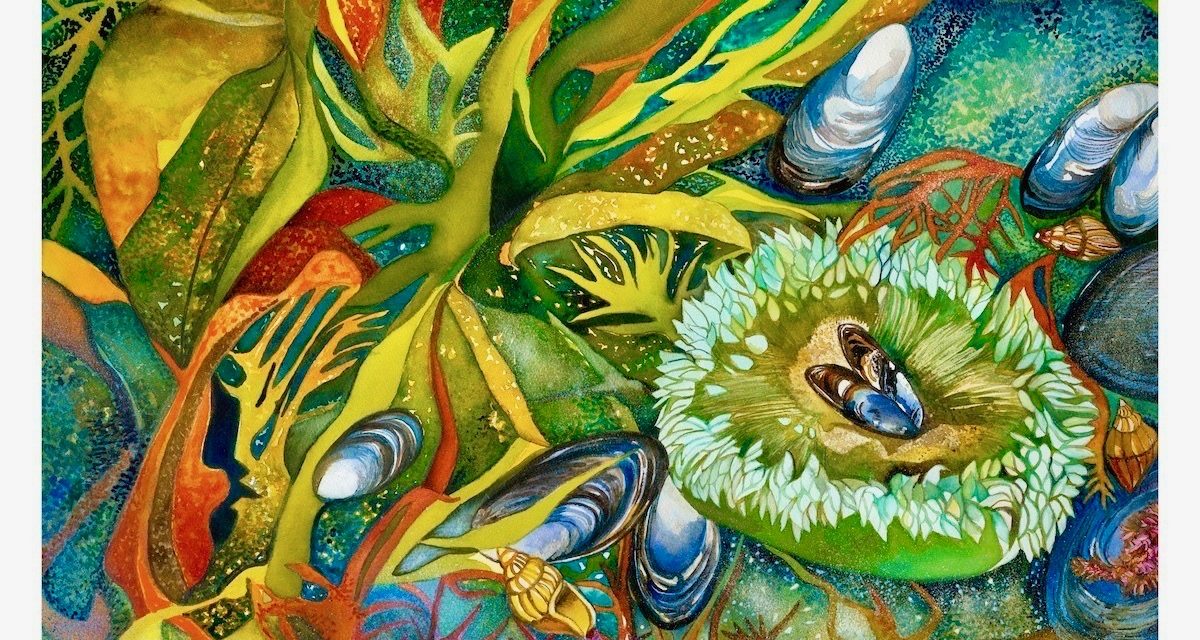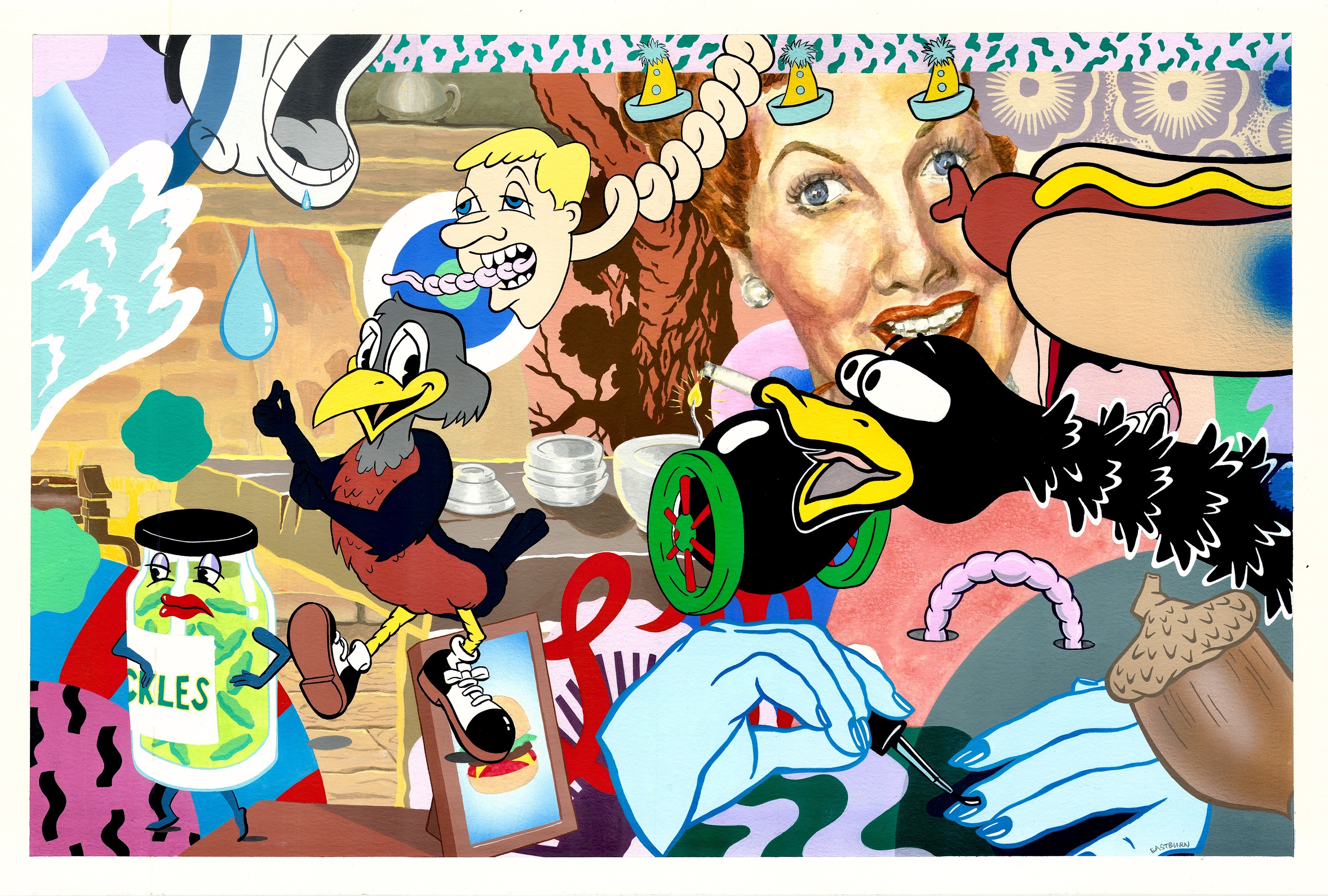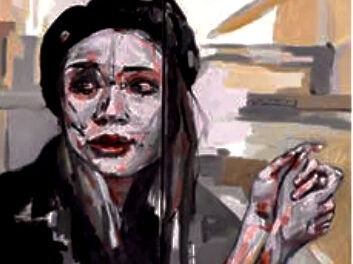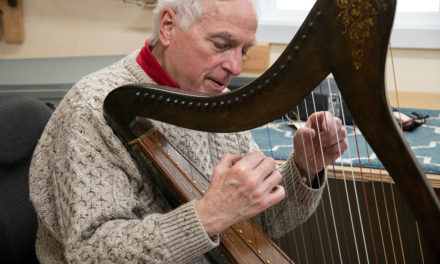(Above: Artist Joann Carrabbio’s painting, Tidepool #2 with profiles)
By Randi Bjornstad
“It’s tiring — it drains you,” Eugene artist Joann Carrabbio says of the ongoing uncertainties that confound societies worldwide with the spread of the coronavirus Covid-19.
But on a recent evening, when she ventured outdoors “I saw all the spring blooms, the flowers, the trees — it was all so beautiful, so good, I felt happier,” Carrabbio says. “And I realized that life goes on — and in the history of the world nature seems so eternal, even in terrible times when humans die.”
So while she fears for people everywhere in this pandemic, Carrabbio not only takes refuge in art, she depends on it and continues to create it.
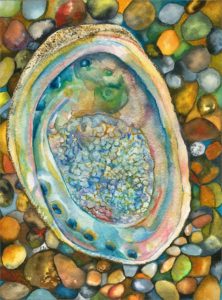
Joann Carrabbio’s watercolor Abalone Shell
“I’m still doing seashells, rocks and pebbles, which I’ve been doing for a long time because I find them so wonderful, both in their beauty and construction,” she says. “About 40 years ago, on the beach near Palos Verdes, Calif., I found an abalone shell, which I still have, but now with overharvesting and climate change, the abalone there seem to be all gone. So now I look at things like that as remnants that need to be documented.”
Carrabbio combines science and art in her renditions of nature.
“I am fascinated by the reality of the things I paint, and I am definitely detail-oriented, so I often wear magnifying lenses and look through a loupe ” Carrabbio acknowledges. “But I have a ton of patience, and I feel I have a lot of time, so I might as well make use of it.”
Although she also has painted in acrylic and oil, Carrabbio has grown to prefer watercolor to other mediums, “because all it needs is pigment and water.”
“It’s so natural, without the potentially toxic components of acrylic or oil or turpentine or varnish — and I have asthma, so I react much better to the simpler, more natural process of watercolor.”
Her fascination with the ocean and its creatures and vistas dates to “a very good experience with discovering the Pacific Ocean when I was 19,” Carrabbio says. “I went on a road trip from Michigan, where I grew up, to California, and I fell in love with the ocean — the tide, sand, shells, rocks, air, birds, everything.”
In childhood, her main exposure to water was in the lakes of Michigan where her family occasionally went in summer to swim. Her father worked in a steel mill, and her family rarely vacationed. Her forebears had been farmers in Italy and even after emigrating to the United States were involved in growing and selling produce.
Some of her earlier efforts at painting included series celebrating food, “which because of the way I grew up I love way too much as a result,” she says. “Food is very important to Italians — it’s just amazing.”
Carrabbio attended Wayne State University in Detroit, graduating with a fine arts degree in painting and drawing. After relocating to Los Angeles, she earned teaching credentials and taught art for 27 years in the city’s school district as well as doing freelance work as a graphic artist and muralist. Along the way, she met and married fellow artist Marco Elliott; they moved with their daughter, now a hydrogeologist — “She studied art but didn’t want the life of an artist,” Carrabbio said — to Eugene in 2009.
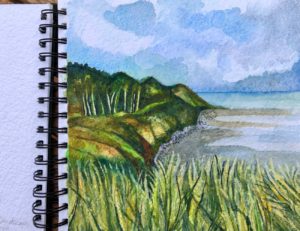 Because she works primarily in watercolor, Carrabbio has developed the habit of doing paintings from sketchbooks, but with a difference — her sketchbooks are not just drawings, but watercolor sketchbooks in themselves.
Because she works primarily in watercolor, Carrabbio has developed the habit of doing paintings from sketchbooks, but with a difference — her sketchbooks are not just drawings, but watercolor sketchbooks in themselves.
“I start out with tiny watercolor paintings, may 9×9 inches or 6×6 inches,” she says, “sometimes a little larger.”
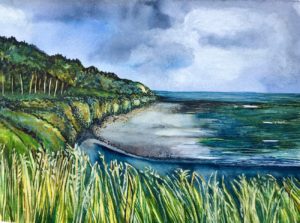 When she starts working on the actual piece, the steps are different.
When she starts working on the actual piece, the steps are different.
“When I first started doing watercolor, the hardest thing was to wait, because there is a lot of stopping for the paint to dry,” she says. “But I have learned to stop, cook, walk, then come back.”
Even then, “sometimes it’s hard to get back into a painting at first, but after 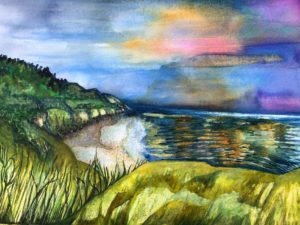 about a third of it is done, I can see where it is going and then it’s easy to finish it.”
about a third of it is done, I can see where it is going and then it’s easy to finish it.”
As she’s gotten older and matured both in life and art, “I think my work has taken on a more zen-like quality that allows me to combine the realism with something deeper,” Carrabbio says. “I’m more comfortable with imperfection and the idea of being faithful to what is there, but as I see it and feel it.”
More about Joann Carrabbio: https://www.instagram.com/joanncarrabbio/

